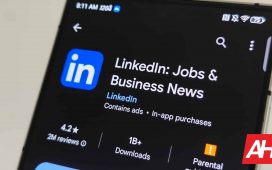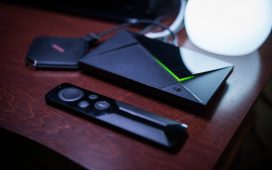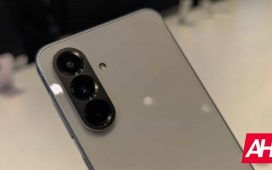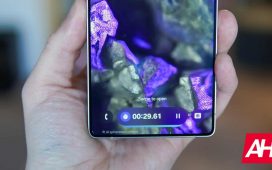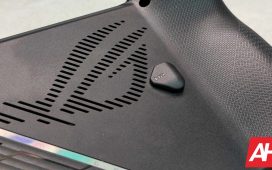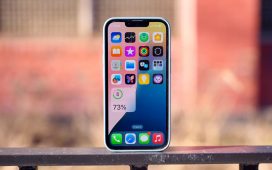Okay, gather ’round, and let me tell you a story. It is a story of hope, ambition, and ultimately, of a future that wasn’t meant to be – at least not for us, the Humane AI Pin, or its creators.
Remember the Smartphone Era? We Thought It Was Ending.
It feels like a lifetime ago, back when the tech world practically vibrated with anticipation. “Is the smartphone era coming to an end?” they asked. The answer, whispered with such fervent hope by the designers at Humane, was a resounding “Yes!” And so, the AI Pin was to be the herald of that new dawn.
It was launched for $699 plus a subscription, promising to revolutionize how humanity interacted with technology. A tiny, AI-powered wearable, it was tipped to make those bulky phones obsolete. It was the “disruptive innovation,” the wave that was supposed to swamp the old ways. Oh, the buzz was deafening!
Humane, led by the visionary ex-Apple designer Imran Chaudhri, unveiled it with such fanfare. This compact device, clipped magnetically to your lapel, wasn’t just a gadget; it was a bold statement, a supposed evolutionary leap in personal computing. The dream was beautiful: a world where technology was seamlessly integrated, an assistant that was present but not intrusive. Science fiction fans were agog with excitement.
But the question on many lips was: “Can this tiny gadget truly compete with the smartphones we’ve grown so dependent on?” We learned the answer the hard way.
The “Revolutionary” AI Pin: A Smartphone Alternative That Stumbled
The design was a radical departure; you have to give Humane that. Unlike smartphones, which demanded constant visual attention, the AI Pin was meant to be a more natural, almost invisible, interface. Humane’s vision wasn’t just about convenience but a fundamental attempt to reshape the human-technology relationship. A noble goal, perhaps too noble.
The AI Pin operated primarily through voice commands and touch controls, with no screen to constantly paw at. Instead, it projected responses onto your palm or any nearby surface – a temporary, interactive display, but only when needed. Imran Chaudhri truly believed we were at a pivotal moment. Technology, he argued, should enhance human capability without commanding our attention.
The AI Pin’s specs, back then, sounded like the future:
- A base price of $699 (a hefty sum, in retrospect, for a first-generation dream).
- Integration with OpenAI’s latest GPT-4 Turbo model (the brains of the operation!).
- A monthly subscription of around $24 (an ongoing commitment many weren’t ready for).
- That clever magnetic attachment system.
- And, of course, the screenless design with its unique projection capability.
How the AI Pin Tried to Transform Daily Interactions
The promise was grand: all the functionality of a smartphone, without the endless distractions. By leveraging advanced AI, particularly through ChatGPT, it was designed to handle complex queries, manage information, and perform tasks that usually had you glued to a glass rectangle.
Users were meant to interact with it through natural voice commands or simple touch gestures. That palm projection? It was its signature move, a fleeting visual interface representing a shift away from the tyranny of the always-on screen. The subscription even included cellular connectivity, so it could stand alone, untethered from a phone. That $24 a month kept the AI Pin’s OpenAI language model sharp and cutting-edge.
Let’s look at how we pitched ourselves against the old guard:
| Feature | Smartphone (The Old Way) | Humane AI Pin (The Dream) |
|---|---|---|
| Screen | Always present, demanding | Projection only when needed |
| Interaction | Touch-based interface | Voice and simple gestures |
| Portability | Pocket or bag carry | Wearable on clothing |
| AI Integration | App-dependent | Core functionality (or so it was) |
The Future of Personal Technology: A Path Not Taken
The launch was meant to be a watershed moment. Humane’s approach was a signal, a bold arrow pointing towards a new direction for personal devices. Instead of another screen, it reimagined interaction from the ground up.
Industry analysts watched, pens poised, wondering if consumers were truly ready. The theoretical advantages were clear:
- Reduced screen time and digital distraction (a noble aim).
- More natural, voice-first interaction (if it worked flawlessly).
- Seamless integration of AI into daily life (the ultimate promise).
- Freedom from constantly checking a phone (the holy grail for some).
However, the success that the AI Pin needed to keep Humane afloat hinged on whether users found its voice and projection interface sufficient for their complex daily lives. The early adopters, bless their adventurous souls, were the canaries in the coal mine. And what they determined, sadly, was that it was perhaps more of an “interesting technology experiment” than a genuine paradigm shift.
The timing seemed perfect. AI capabilities were exploding, and digital assistants were becoming sophisticated enough to potentially handle many smartphone tasks. While steep, that $699 price point wasn’t a world away from high-end phones, though the added subscription was a consistent friction point.
As Humane stood at that technological crossroads, the paramount question was indeed: “Is the general public ready to trust an AI-powered companion to this degree?” The answer, it turned out, was “not yet,” or at least, “not like this.” Not without the familiar comfort of a screen for many tasks, not with the occasional AI hallucination or misinterpretation, and perhaps not with a business model that couldn’t sustain the dream.
So, here the AI Pin is, a relic of a future that flickered brightly but briefly. The smartphone era didn’t end. Humane, the company that poured so much into the project, eventually closed its doors, with HP picking up much of the IP. The AI Pin serves as a reminder: innovation is a brave, often brutal, journey. Not every revolution succeeds, but every attempt teaches us something.

